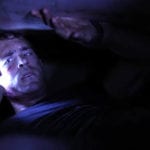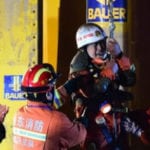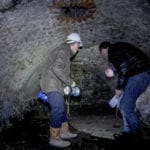 Movies and TV
Movies and TV  Movies and TV
Movies and TV  Creepy
Creepy 10 Eerie & Mysterious Ghosts of the Pacific Coast
 Weird Stuff
Weird Stuff 10 Typos That Accidentally Changed History
 History
History 10 Times Trickery Won Battles
 Technology
Technology 10 Awesome Upgrades to Common Household Items
 Misconceptions
Misconceptions 10 Hilarious (and Totally Wrong) Misconceptions About Childbirth
 Weird Stuff
Weird Stuff 10 Warning Labels That Exist Because Someone Actually Tried It
 Health
Health Ten Confounding New Inventions from the World of Biomedicine
 Creepy
Creepy 10 Death Superstitions That Will Give You the Creeps
 Movies and TV
Movies and TV 10 Movies That Get Elite Jobs Right, According to Experts
 Movies and TV
Movies and TV 10 Most Realistic Medical TV Shows of All Time
 Creepy
Creepy 10 Eerie & Mysterious Ghosts of the Pacific Coast
 Weird Stuff
Weird Stuff 10 Typos That Accidentally Changed History
Who's Behind Listverse?

Jamie Frater
Head Editor
Jamie founded Listverse due to an insatiable desire to share fascinating, obscure, and bizarre facts. He has been a guest speaker on numerous national radio and television stations and is a five time published author.
More About Us History
History 10 Times Trickery Won Battles
 Technology
Technology 10 Awesome Upgrades to Common Household Items
 Misconceptions
Misconceptions 10 Hilarious (and Totally Wrong) Misconceptions About Childbirth
 Weird Stuff
Weird Stuff 10 Warning Labels That Exist Because Someone Actually Tried It
 Health
Health Ten Confounding New Inventions from the World of Biomedicine
 Creepy
Creepy 10 Death Superstitions That Will Give You the Creeps
 Movies and TV
Movies and TV 10 Movies That Get Elite Jobs Right, According to Experts
10 Claustrophobic Tales Of People Trapped Underground That Will Leave You Breathless
The Earth’s surface holds many wonders great and small, natural and man-made. A different, though no less mesmerizing, world exists below. Human beings, while certainly not optimized for these environments, enter them regularly. Tourists visit caves, commuters shoot through subway tunnels, and miners across the world work underground as a matter of course. By and large, such forays into the ground do not last, and spelunkers, miners, and commuters emerge into the light and fresh air of the world above.
Sometimes, however, that’s not so easy. Sometimes, calamity leaves one or more unfortunate souls trapped underground, unable to reach the surface without help. In these dire situations, the entombed are left with few options but to hope for rescue. Some get it; others die in absolute darkness, feeling only their own fear and the indifferent, immutable rock around them.
10 Sago Mine Disaster
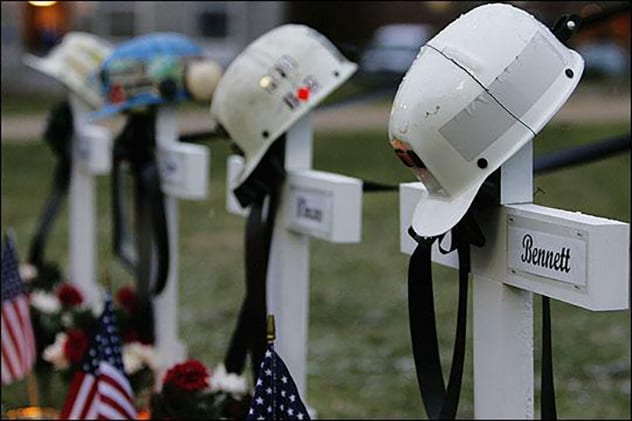
January 2, 2006, was supposed to be an unremarkable morning for the workers at Sago Mine, nestled in the heart of West Virginia. New Year’s was over, and it was time for work. Ultimately, the reluctant return to the daily grind was to be anything but.
At around 6:30 AM, an explosion rocked the mine as workers were entering. A resultant cave-in trapped 13 miners inside. Those lucky enough to have found themselves on the other side of the cave-in immediately attempted to dig their coworkers out, but too much carbon monoxide had seeped into the air for them to do so. The trapped miners were equipped with emergency oxygen packs, but to add to their misfortune, not all of them worked.
The miners remained trapped as rescuers attempted to reach them. Try as they might, there was no escaping the fumes. There was little else for them to do but pray and write letters to their loved ones. One by one, they lost consciousness.[1]
In a pattern that will be repeated on this list, the rescue operation above attracted a media circus. Over 40 hours after the explosion, the miners were found. All but one had died. The lone survivor, Randal McCloy, was in critical condition and would not regain consciousness for days. In a cruel twist of fate, miscommunication initially led to reports that 12 miners had survived. Within a few hours, that egregious error had been corrected.
The cause of the January 2 explosion has been a subject of contention. International Coal Group, which owned Sago Mine, as well as two West Virginia state agencies declared that a lightning strike probably ignited methane in the mine. Meanwhile, the United Mine Workers attributed the disaster to friction between rocks and/or metal supports. Sparks from equipment being restarted due to work resuming after the holidays have also been blamed. Sago Mine was reopened a few months later but was eventually sealed by International Coal Group.
9 Alpazat Caverns Rescue
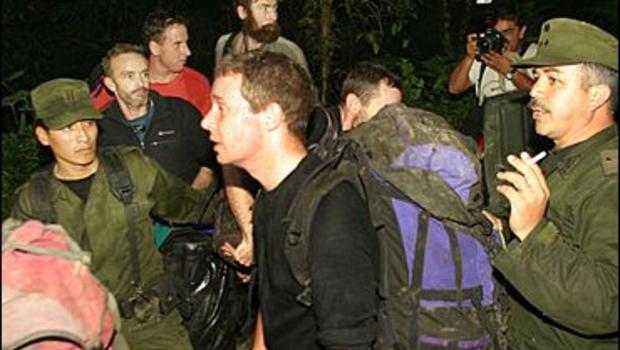
In March 2004, six British soldiers, members of the Combined Services Caving Association, were inside Alpazat caverns, located in the Mexican state of Puebla. Their expedition was intended to last 36 hours but became a good deal longer when flash flooding prevented them from leaving the cave. The men found themselves trapped on a 4.6-meter (15 ft) ledge above a raging underground river.[2]
Luckily, the cavers were prepared for such a contingency. They had enough food to last for days, plenty of light sources, dry clothing, and the river for “hygienic needs.” Six more members of their party were outside the cave and able to contact rescuers. Eight days later, the men were led out, one by one, by cave divers, a process which took six hours. They emerged into the midst of a war of words between Mexico and the UK.
What was the problem? Well, suspicions arose when it came to light that the men had entered Mexico with only tourist visas and hadn’t notified Mexican authorities of the caving expedition. The cavers also refused help from Mexico and elected to wait for two British cave diving experts to arrive at Alpazat caverns, which was seen as a slight. (In the end, those two divers still worked with five local cavers and about 40 Mexican soldiers to rescue the trapped men.) Rumors flew about the group’s activities, including that they were prospecting for uranium. One of the cavers outside, awaiting the rescue of his teammates, said of the trip: “It’s an official military expedition to support adventurous training.” The whole awkward affair was described as a “diplomatic dog’s breakfast.” The rescued men were fine.
8 Julen Rosello
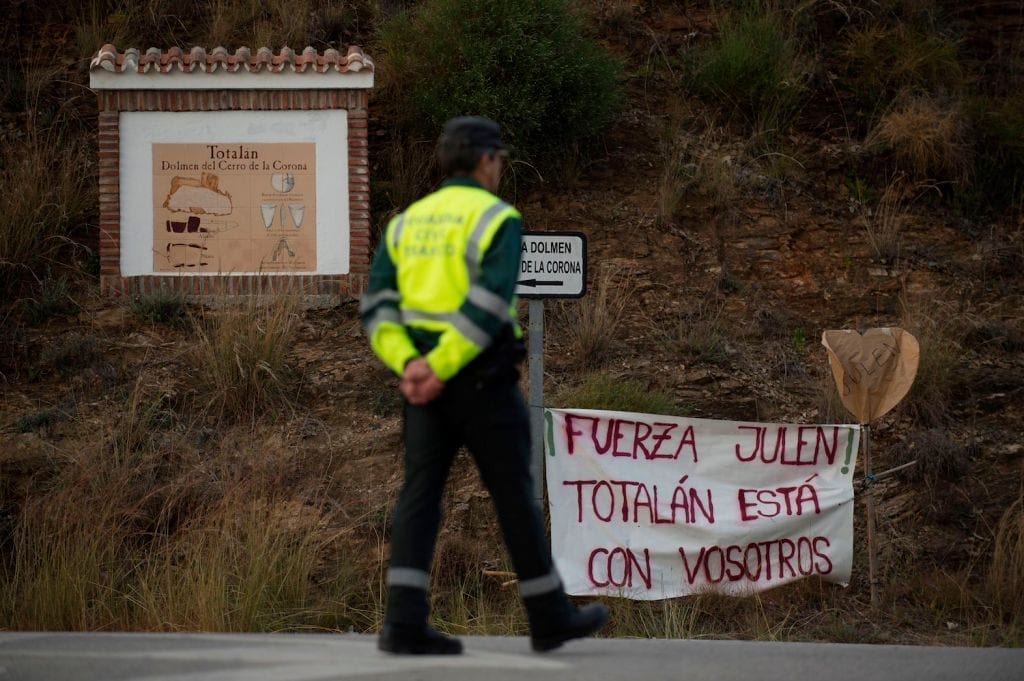
Tragedy struck on January 13, 2019, in Totalan, a village near Malaga in Southern Spain. That day, two-year-old Julen Rosello (also named as “Julen Rosello Garcia” and “Julen Rosello Jimenez” in various reports) was with his parents out in the countryside when he fell into an unmarked borehole. Julen’s father saw him nearing the hole and ran to stop him, but it was too late. Though the well’s opening was reportedly covered by rocks, tiny Julen fell in. His father could hear Julen’s cries only when he first reached the mouth of the 110-meter-deep (361 ft) shaft and no more afterward.
Rescue efforts began immediately. Complicating matters was the fact that the borehole was only 25 centimeters (10 in) wide. Around 300 people were involved in the process of digging a parallel shaft to reach Julen, a task which occasionally necessitated explosives. The operation was described as months’ worth of excavation being carried out in only days. Sadly, it was all for naught. During the early morning hours of January 26, 13 days after he fell in, Julen’s body was found 71 meters (233 ft) down, lying upon compacted earth. It is believed that he fell feet-first and died on impact.[3]
Strangely, there had also been plugs of compacted earth above Julen, something which hindered rescuers. It was surmised that his fall may have dislodged chunks from the side of the failed well, which subsequently covered Julen. The businessman who had dug the hole claimed to have sealed it afterward but said that it must have come open again somehow.
7 Yorkshire Rescue Attempt

On June 1, 2019, Harry Hesketh, age 74, was exploring a cave on Fountains Fell, a mountain in Yorkshire. At around 11:30 AM, the experienced caver fell down at 6-meter (20 ft) drop and broke his leg. His two friends immediately went to summon help. A total of 94 people worked tirelessly both above and below the surface to save Mr. Hesketh.[4]
As is so often the case in these situations, that was easier said than done. The passages were narrow and unmapped. Nevertheless, rescuers managed to reach Harry with medical supplies and began to monitor his condition and keep him warm. It was clear that Harry would have to be immobilized to be taken out of the cave.
Workers tried to widen the passage as quickly as they good in order to save the trapped caver, but time was not on his (or their) side. Around 12 hours after his fall, Harry Hesketh died. It took roughly five and a half more hours to remove his body from the cave.
6 Quecreek Mine Rescue
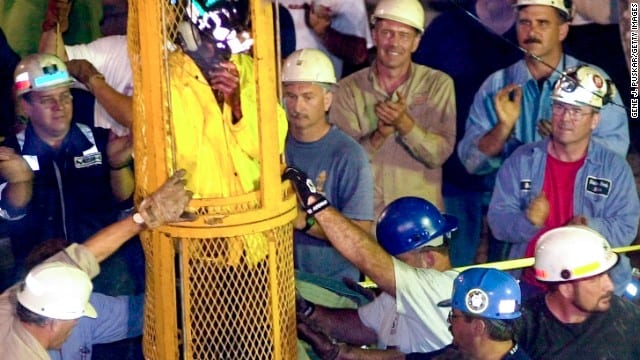
On the evening of July 24, 2002, 18 miners were working second shift at the Quecreek Mine in Somerset County, Pennsylvania. Work was being performed near the old Saxman Mine, which was no longer in use. It was believed that about 90 meters (300 ft) of rock still separated the miners from the disused mine. This was not the case.
At around 9:00 PM, the miners broke through into Saxman, which had filled with groundwater. Millions of gallons of water rushed into Quecreek Mine as the workers ran for their lives. Nine men could not escape. They found themselves stuck 73 meters (240 ft) below the surface in a chamber which was a mere 1.2 meters (4 ft) high.[5]
A rescue operation soon began. By midnight, calls had gone out for a drill capable of boring a hole large enough to retrieve the trapped miners. One was found in Clarksburg, West Virginia. In the meantime, rescuers spent the early morning hours of July 25 drilling a 15-centimeter-wide (6 in) hole down to where the miners were trapped. After the drill broke through, they heard tapping, indicating that the men were alive. Warm compressed air was pumped through the narrow shaft to keep the miners warm and hopefully keep the water at bay.
That afternoon, the so-called “super drill” arrived under police escort. The drilling of a rescue shaft 76 centimeters (30 in) wide began that evening and was initially expected to take 18 hours. However, mere hours into July 26, the drill’s bit broke roughly 30 meters (100 ft) down. A replacement bit was rushed to the site via helicopter, with a backup shaft being drilled nearby in the meantime. By 8:00 PM on July 26, drilling of the primary shaft had resumed. Nevertheless, worry had settled in among the rescue crew, who hadn’t heard any tapping from the miners since around noon the previous day.
Finally, after 10:00 PM on July 27, the super drill made it to the miners’ chamber. Food and a telephone were soon sent underground. Not long after that, rescue workers began to smile and give thumbs-ups. The men were alive, all of them. The crew leader, who had begun to experience chest pains, was brought up first. Then the rest came over the next few hours. The rescue was a much-needed happy ending for a community living a stone’s throw away from the crash site of Flight 93, 9/11 having happened less than a year earlier.
5 Floyd Collins
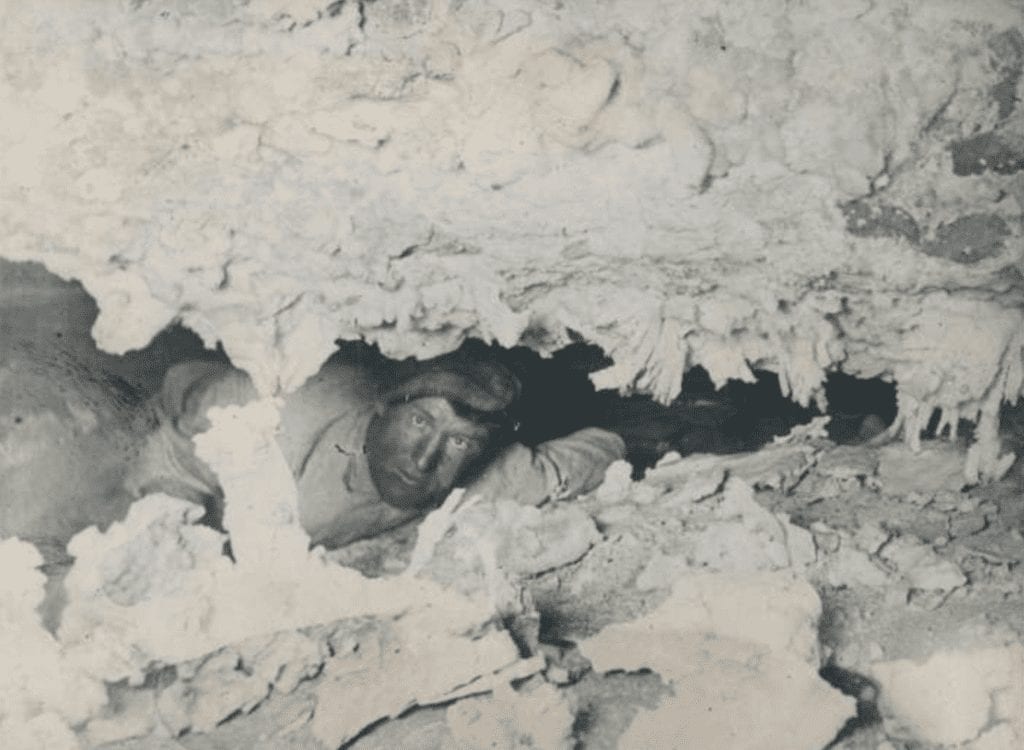
Floyd Collins stands as the most famous casualty of the Cave Wars, a period during the early 20th century in Kentucky when owners of various caves fiercely competed for tourist dollars. One such cave was Crystal Cave, owned by the Collins family. Unfortunately, its remote location meant that few tourists came to it. Floyd Collins sought to claim a cave in a better spot. He knew of one, called Sand Cave, which was conveniently located close to a road. This cave hadn’t been explored, and Collins made a deal with its owner to share half the profits if the cave turned out to be a worthy tourist attraction.
On January 30, 1925, Floyd entered Sand Cave, carrying only a kerosene lamp for light. The cave soon proved to be challenging, with Collins worming his way through a narrow, winding passage, inching ever deeper into the ground. Finally, the passage began to widen, but it was at this point that Floyd’s lamp began to flicker, leaving him with no choice but to return to the surface. As he made his way up, he dislodged a 12-kilogram (27 lb) rock that pinned his left foot. Floyd was completely unable to free himself, his arms stuck at his sides. All he could do was yell for help.[6]
He was finally found a day later by his brother, Homer. However, there was no extracting Floyd from above. Days passed, and the scene became a carnival, with thousands of gawkers showing up. During the chaos, a young reporter named William Burke “Skeets” Miller, a rather small man, repeatedly crawled down into Sand Cave to interview Floyd as well as bring him food and an electric light bulb for warmth. Miller’s interviews later won him a Pulitzer Prize.
After a cave-in blocked access to Floyd, workers began to dig a shaft to get him out. Finally, 18 days after he became trapped, they reached Floyd, but it was far too late. He had been dead for several days. The crowds dispersed, and a funeral was held outside the cave. This, however, was not the end for poor Floyd.
Homer, with the help of friends, dug his own shaft and managed to finally recover Floyd’s body on April 23. Floyd was buried on the family farm. In 1927, Floyd’s father sold the family’s property, including Crystal Cave, and the new owner displayed Floyd’s remains in a glass-topped coffin in the cave. Then, in March 1929, Floyd’s body was stolen. It is said that the body was found missing the left leg which had been pinned four years before. After this, Floyd’s remains were still kept in Crystal Cave, albeit now in a chained coffin in a remote part of the cavern. In 1961, the National Park Service bought and closed Crystal Cave. Finally, in 1989, Floyd’s remains were removed from the cave and interred in a cemetery.
4 69 Days Underground
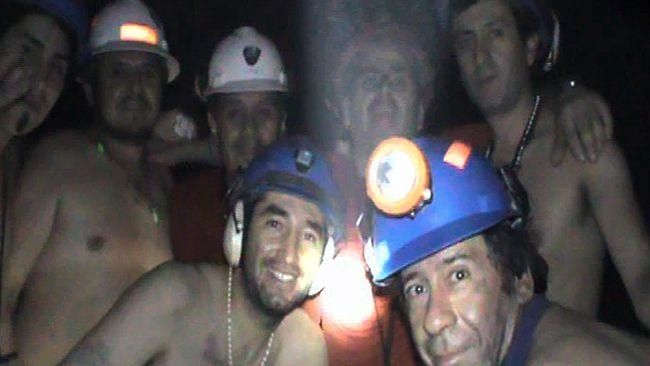
On August 5, 2010, a cave-in occurred at the San Jose copper and gold mine near Copiapo, Chile. As a result, 33 workers found themselves trapped 700 meters (2,300 ft) below the surface. Matters were further complicated on August 7, when another collapse cut off access to ventilation shafts. Rescuers topside began drilling listening holes in an attempt to discern the workers’ status. These efforts were hampered by outdated maps of the mine.
Down below, the miners were in a bad situation. They were stuck in hot, humid air at a temperature of 35 degrees Celsius (95 °F), which led some to develop fungal infections as well as respiratory and eye problems. They only had enough food to last two days, so they took one meal (two spoonfuls of tuna, half a glass of milk, and half a cookie) every other day. They were able to obtain water from radiators and a spring. They had to subsist this way for 17 days.[7]
On August 22, rescue workers up above finally detected tapping on one of their probes. When they pulled it up, there was a note indicating that everyone was alive. From this point forward, it was possible to send the men food, water, and supplies through the borehole. Additionally, movies and music were sent down, and a cable allowed the trapped workers to directly communicate with those above, including their families. Actual rescue, however, was still far off.
The 33 men developed a routine over the subsequent days. They formed three teams which worked, played, or slept in eight-hour intervals. Work involved helping the rescuers in any way they could as well as checking on the well-being of the other miners. Play entailed watching movies or playing cards, dominoes, or dice games. The men also exercised by simply running up and down the tunnels.
Meanwhile, three separate drilling rigs had been brought to the site, and three shafts were being dug. On October 9, one of the three broke through into a chamber the miners had access to. Then came the task of lining the rescue shaft with metal in preparation for the extractions. Finally, just after midnight on October 13, the first rescued miner saw the sky for the first time in months. By the end of the day, the last man had been pulled out. All 33 had survived a total of 69 days underground.
3 Baby Jessica

On the morning of October 14, 1987, 18-month old Jessica McClure, soon to be known to the world as Baby Jessica, was playing among other children in the backyard of the Midland, Texas, daycare run by her aunt. Jessica’s mother, Cissy, was watching the children but briefly stepped inside to answer the phone. During that time, Jessica fell into a 20-centimeter-wide (8 in) well and became trapped 6.7 meters (22 ft) below. As with the case of Julen Rosello above, the well had been supposedly covered with a rock to prevent exactly this sort of calamity, but it nevertheless happened.
Alerted by the screams of the other children, a frantic Cissy called the police. The narrowness of the well and the hardness of the earth around it made rescue a challenge, to say the least. Rescuers brought in a machine normally used to dig holes for telephone poles and used it to excavate a 76-centimeter (30 in) hole (29 ft) into the ground. Then came the task of drilling horizontally to reach Jessica.
As this was happening, oxygen was pumped into the well, and workers did their best to keep communicating with Jessica. Fortunately, she was more than willing to talk, speaking to rescuers or making some sort of sound for most of the operation, though she was not a fan of the noise generated by the jackhammers. A detective working at the scene recalled her singing “Winnie the Pooh.”
During the evening of October 16, Jessica was finally lifted out of the well. She had been stuck underground for 58 hours. The whole rescue had been covered lived by CNN, something relatively uncommon at that time. An iconic photograph of a paramedic carrying Jessica earned the photographer, Scott Shaw, a Pulitzer. Jessica required 15 surgeries over the next few years due to the aftereffects of her time in the well, but she ultimately recovered and has little memory of the event.[8]
2 Chasnala Disaster
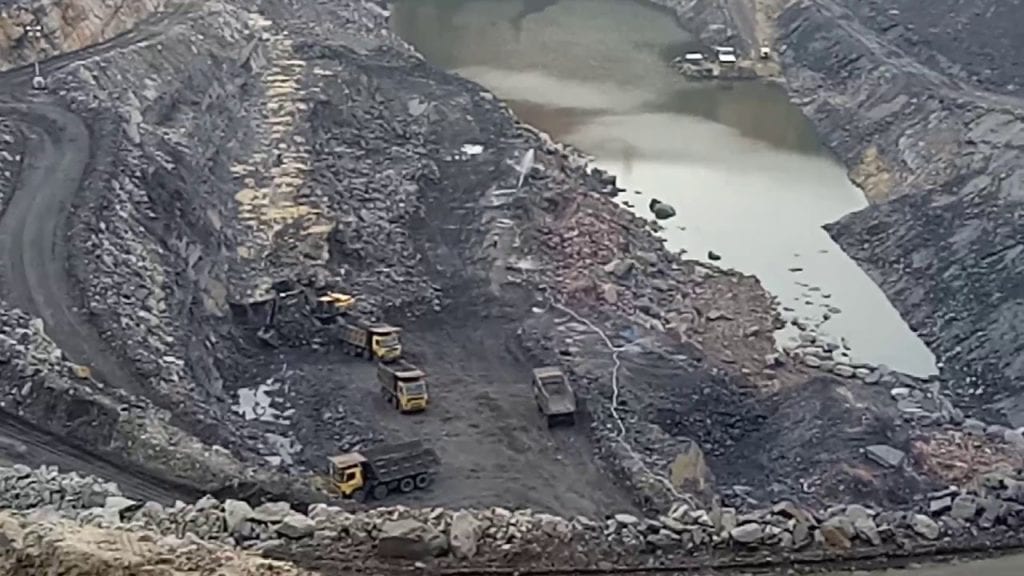
Catastrophe struck on December 27, 1975, at the Chasnala colliery, a coal mine in India. The mine was situated next to an abandoned one, which, predictably, was flooded. Only a barrier of rock and coal protected the operational coal mine from the reservoir of the old one.[9]
At around 1:30 PM, an explosion damaged that barrier, sending torrents of water and debris into the mine. The initial response was chaotic, with officials reportedly fleeing and the first water pumps that were used being inadequate for the task at hand. Better pumps had to be brought in from the US, Poland, and Russia.
Twenty-six days after the explosion, the first body was finally retrieved. Others were eventually recovered, and many could only be identified by the numbers on their helmets. Plenty were never found. Depending on the source you consult, between 372 and 380 people were in the mine. No one survived. There are rumors that the death toll is actually higher, as there were also 130 contract laborers working that day.
After the tragedy, it was reported that there had been prior warnings that exactly this sort of flood could occur. These warnings were ignored. Today, a memorial known as the Shaheed Smarak stands for the victims.
1 Tham Luang Cave Rescue
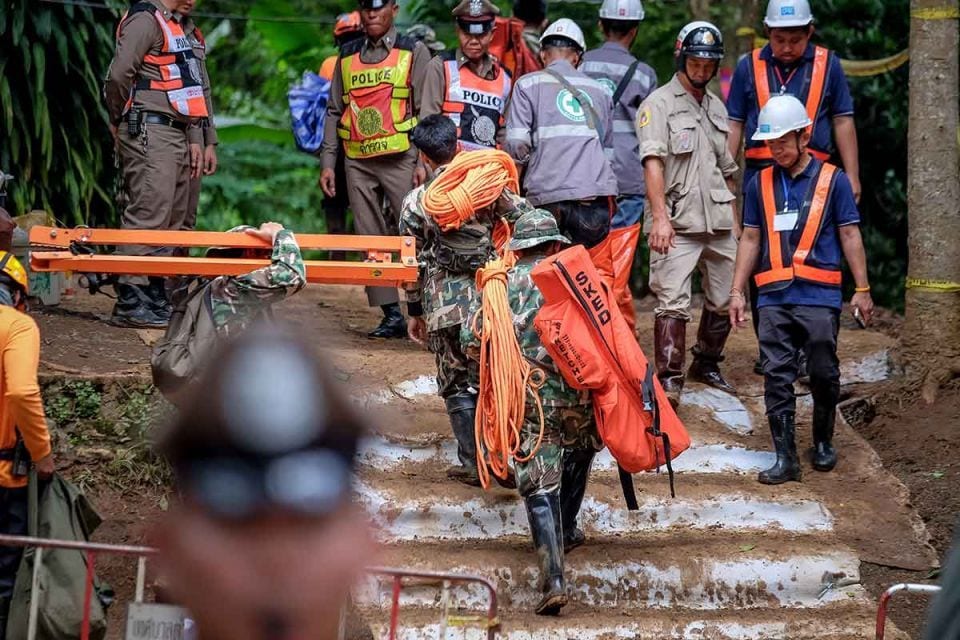
On June 23, 2018, 12 members of a local youth soccer team, the Wild Boars, in Thailand’s Chiang Rai Province had just completed practice. The boys, along with their assistant coach, decided to do something they’d done plenty of times before: venture into the nearby Tham Luang cave for to write the names of new team members on a wall, something of a Boars tradition. They bicycled across rain-soaked fields and into the hills, parking their bikes by the cave’s entrance and entering with flashlights for a quick trip.
What they did not consider is that the Tham Luang cave system should only be entered between November and April. During the monsoon season, which typically starts in July, it is an extremely dangerous place. Indeed, the team found themselves facing a flash flood which blocked their exit and forced them deeper underground. They ended up trapped 4 kilometers (2.5 mi) from the cave entrance.
When the boys failed to turn up that evening, it didn’t take long for their parents to figure out where they might have gone. Rescue efforts were promptly underway, involving the police, various rescue teams, volunteers, and the Thai Navy Seals. Even with such a group assembled, finding and saving the team would not be easy. The Navy divers, despite their training, largely had little cave diving experience. On top of that, rain was still a frequent occurrence. Rescue workers did what they could to pump water out of the cave. Others drilled into the mountainside, hoping to find other passages into the cave system. Thermal sensors and drones were also employed to locate the trapped boys. Team members who hadn’t gone into the cave on June 23 were asked about where the boys would usually go. Word of the incident spread around the world, and rescue workers and cave divers from a multitude of countries began to arrive on June 28.
While the world watched above, the 12 boys and their coach remained on their ledge with no food, though potable water dripped from the walls. They used rocks to dig a 5-meter cave of their own, which they would huddle in for warmth. The assistant coach, a former monk, taught them meditation techniques and instructed them to remain still to conserve strength. Time began to lose all meaning for the trapped soccer team.
On July 2, two British cave divers found the team. Elated to see that everyone was alive, the divers left lights and returned to the surface to deliver the good news. A medic and other divers joined the Wild Boars and would stay with them for the remainder of their time in the cave. Despite the team members’ strong desire for some solid food, a doctor mandated that they be kept on a diet of liquid food and vitamin-infused mineral water. Next came the challenge of guiding the 13 through a stretch of submerged cave that would be a challenge for experienced divers. One of the team couldn’t swim. The danger was underscored only a few days later, when Saman Gunan, a former Thai Navy Seal who had volunteered to help, died while returning from delivering air tanks to the boys.
On July 7, the rain let up, but it was decided that the team had to be rescued by July 10, when it was predicted that the cave would be completely flooded. The children were given full face masks and air tanks. They were clipped to divers and also had handles attached to their backs. It has been reported that the boys were heavily sedated so they wouldn’t panic during their trip to the surface. For transportation over a part along the way that wasn’t flooded, the boys were placed in stretchers. Pulleys were used to get them up a steep slope.
One by one, the team members were extracted from the cave over the next three days. By July 10, water levels were indeed rising again. Not long after the last Wild Boar made it to the surface, the three men who had stayed with them underground emerged. Right after that, a pump failed, sending more water into the cave and workers scrambling. Nevertheless, the team was safe.[10]
For more tales of the trapped check out 10 Suffocating Tales Of People Trapped Underwater, and 10 True Horror Stories Of People Trapped In Caves.
